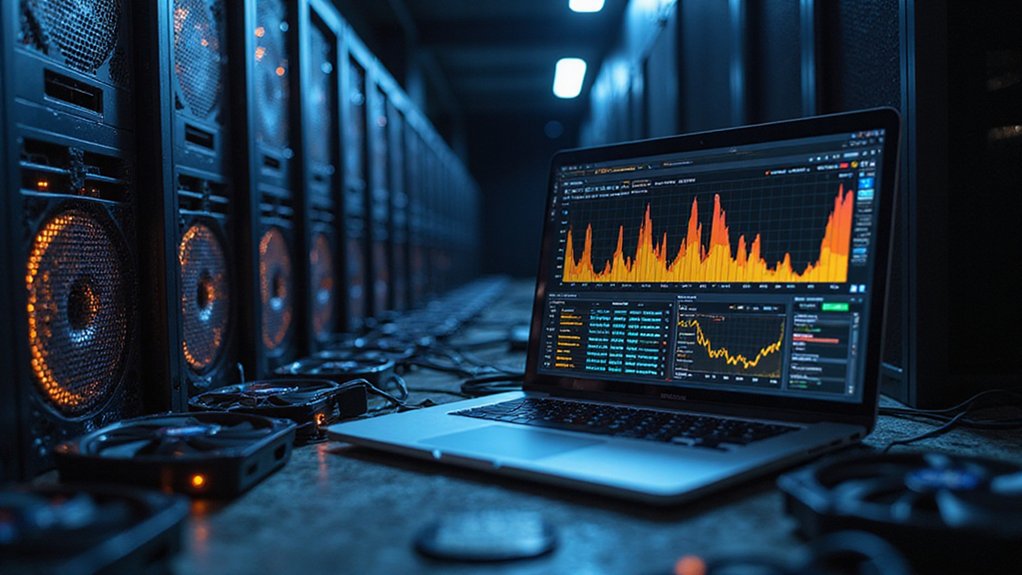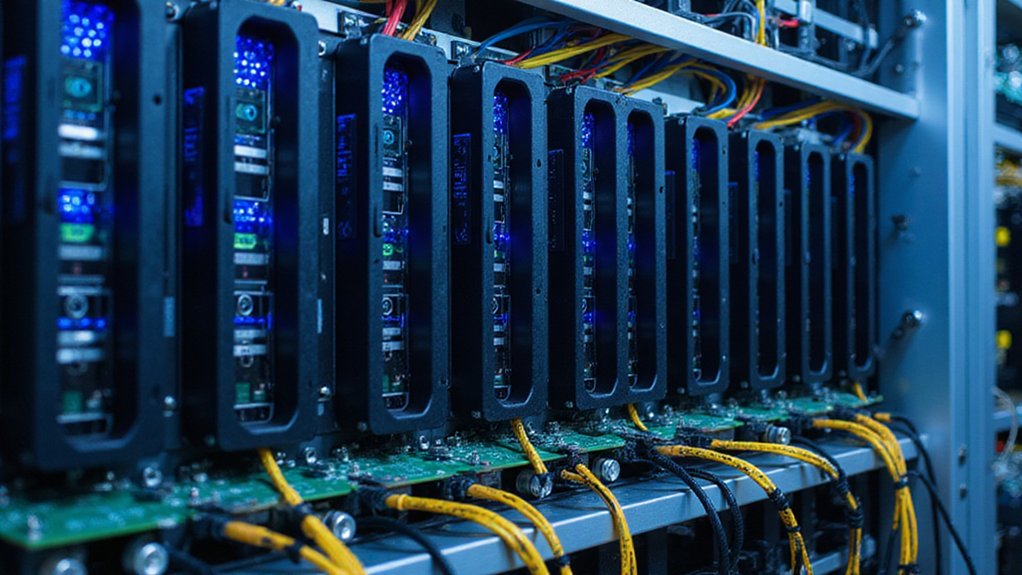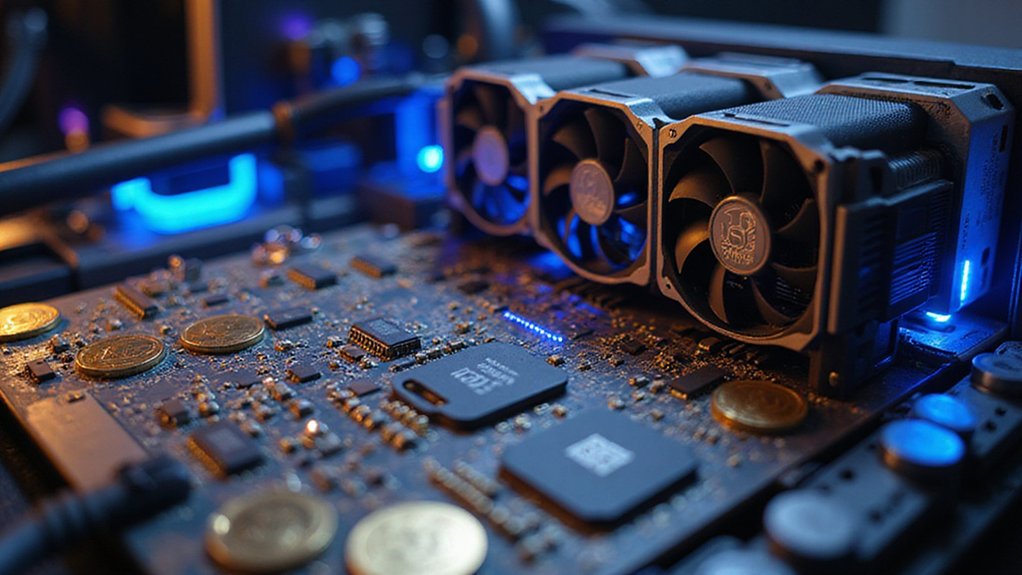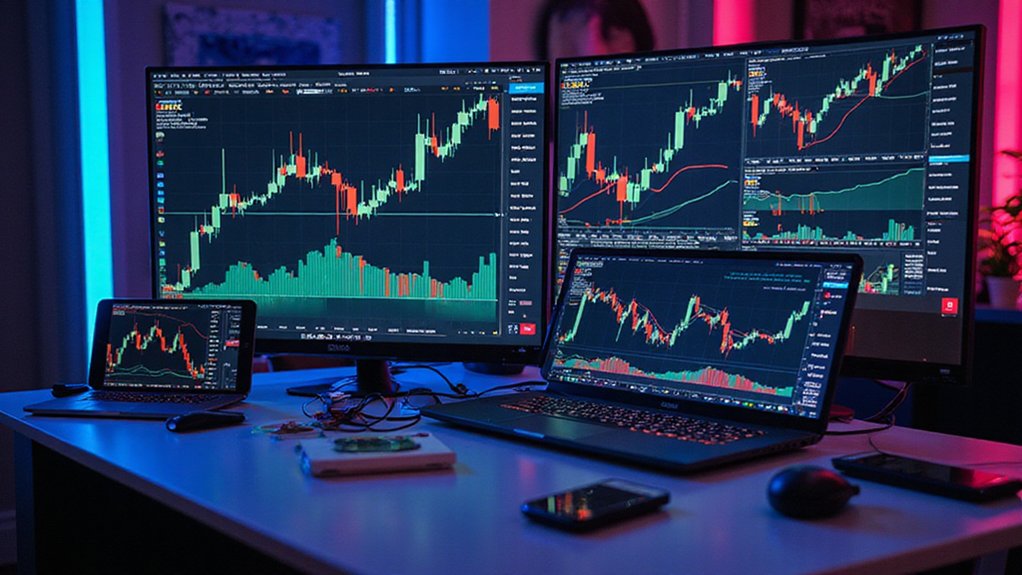Bitcoin mining software selection determines whether miners achieve profitability or subsidize the network’s security through incompetence. CGMiner offers granular ASIC control for technical users, while EasyMiner provides graphical interfaces for those preferring convenience over optimization. BFGMiner targets experienced miners demanding minimalistic functionality, and NiceHash creates hybrid marketplaces for hashing power trading. Cloud services like BitFuFu eliminate hardware management entirely (though surrendering control). Pool compatibility, SHA256 processing efficiency, and fee structures ultimately separate profitable operations from expensive hobbies requiring deeper strategic analysis.

The labyrinthine world of Bitcoin mining software presents a curious paradox: while the underlying blockchain technology operates on elegant mathematical principles, the tools required to participate in this digital gold rush range from brutally technical command-line interfaces that would make a Unix administrator weep with nostalgia to point-and-click solutions so simplified they border on the absurd.
CGMiner stands as the venerable grandfather of mining software—open-source, battle-tested, and supporting everything from ASIC to FPGA hardware across Windows, Linux, and macOS platforms. Its command-line interface offers granular control that advanced users crave, complete with real-time performance metrics that would satisfy the most obsessive efficiency optimizer.
CGMiner’s command-line interface delivers the granular control and obsessive performance metrics that separate mining dilettantes from true cryptocurrency purists.
BFGMiner follows similar philosophical principles, targeting seasoned miners who view user-friendly interfaces with the same suspicion reserved for financial advisors promising guaranteed returns.
For those who prefer their mining software to acknowledge that not everyone speaks fluent terminal commands, EasyMiner provides a graphical interface that transforms the arcane art of cryptocurrency extraction into something approaching normalcy. Many mining programs now include customizable hotkeys for quick access to essential functions and performance adjustments.
Meanwhile, NiceHash has constructed an intriguing hybrid model—part mining software, part marketplace—where users can buy and sell hashing power like commodities traders dealing in particularly volatile wheat futures.
The cloud mining sector presents an entirely different approach, effectively outsourcing the technical complexities to service providers. Binance Miner and BitFuFu exemplify this model, managing hardware, software, and maintenance while users participate remotely through rental agreements.
BitFuFu particularly distinguishes itself through consistent uptime and competitive post-fee returns, though one must wonder if the convenience justifies surrendering direct control over mining operations.
Mining pool compatibility remains essential regardless of software choice, as most solutions support multiple pools with automatic switching based on performance metrics. Hash-rate efficiency, fee structures, and payout cadence all factor into profitability calculations that would challenge a derivatives trader’s spreadsheet skills.
Ultimately, software selection depends on technical expertise, hardware preferences, and tolerance for complexity. The rapid growth in competitive mining options has made optimal software selection increasingly crucial for maintaining profitability in today’s market. Modern mining software must efficiently process the SHA256 algorithm to generate the cryptographic hashes necessary for block validation and network security.
Whether traversing CGMiner‘s command-line depths or embracing cloud mining’s simplified approach, miners must balance efficiency optimization against operational convenience—a decision that encapsulates the broader cryptocurrency dilemma of decentralized idealism versus practical implementation.
Frequently Asked Questions
How Much Electricity Does Bitcoin Mining Software Consume Daily?
Bitcoin mining software collectively consumes approximately 410 gigawatt-hours of electricity daily—assuming the network’s annual consumption hovers around 150 terawatt-hours.
This staggering figure fluctuates wildly based on Bitcoin’s price volatility and miners’ operational decisions. The software itself requires negligible power; rather, it orchestrates the energy-intensive Proof of Work computations that rival entire nations’ electrical grids, making efficiency optimization a rather ironic pursuit.
Can Bitcoin Mining Software Damage My Computer Hardware?
Bitcoin mining software can indeed damage computer hardware, though the culprit isn’t the software itself but rather the relentless computational demands it orchestrates.
The software pushes GPUs and ASICs to their thermal limits, potentially accelerating component degradation through excessive heat generation. Poor cooling systems, overclocking configurations, and inadequate environmental controls compound these risks.
However, properly configured mining operations with adequate cooling, conservative settings, and regular maintenance can mitigate most hardware damage concerns effectively.
Is Bitcoin Mining Software Legal in My Country?
Bitcoin mining software legality varies dramatically by jurisdiction—while permitted across most developed nations (including the US and Europe), some countries like Qatar have banned such activities entirely.
Mining software itself remains legal in most regions, though operators must navigate licensing requirements, taxation obligations, and evolving regulatory frameworks.
The software’s legality ultimately depends on one’s specific location and compliance with local cryptocurrency legislation, which continues shifting unpredictably.
What Internet Speed Is Required for Bitcoin Mining Software?
Bitcoin mining software requires surprisingly modest internet speeds—ASIC miners need merely 10-20 Mbps while GPU setups demand around 100 Mbps.
The real challenge isn’t bandwidth but stability; even minor connection hiccups can torpedo profitability faster than one might expect.
Wired ethernet connections prove essential, as Wi-Fi’s inherent instability can cause packet loss, leading to rejected shares and reduced earnings—a particularly bitter irony given mining’s computational intensity.
How Long Does It Take to Mine One Bitcoin?
An individual miner faces approximately 1,460 days (four years) to mine one Bitcoin—a timeline that would make geological formations seem impatient.
The network collectively processes blocks every ten minutes, yielding 3.125 BTC per block, meaning one Bitcoin emerges every 3.2 minutes across all miners.
However, solo miners wielding typical hardware might require decades, making lottery tickets appear like sound investment strategies by comparison.









